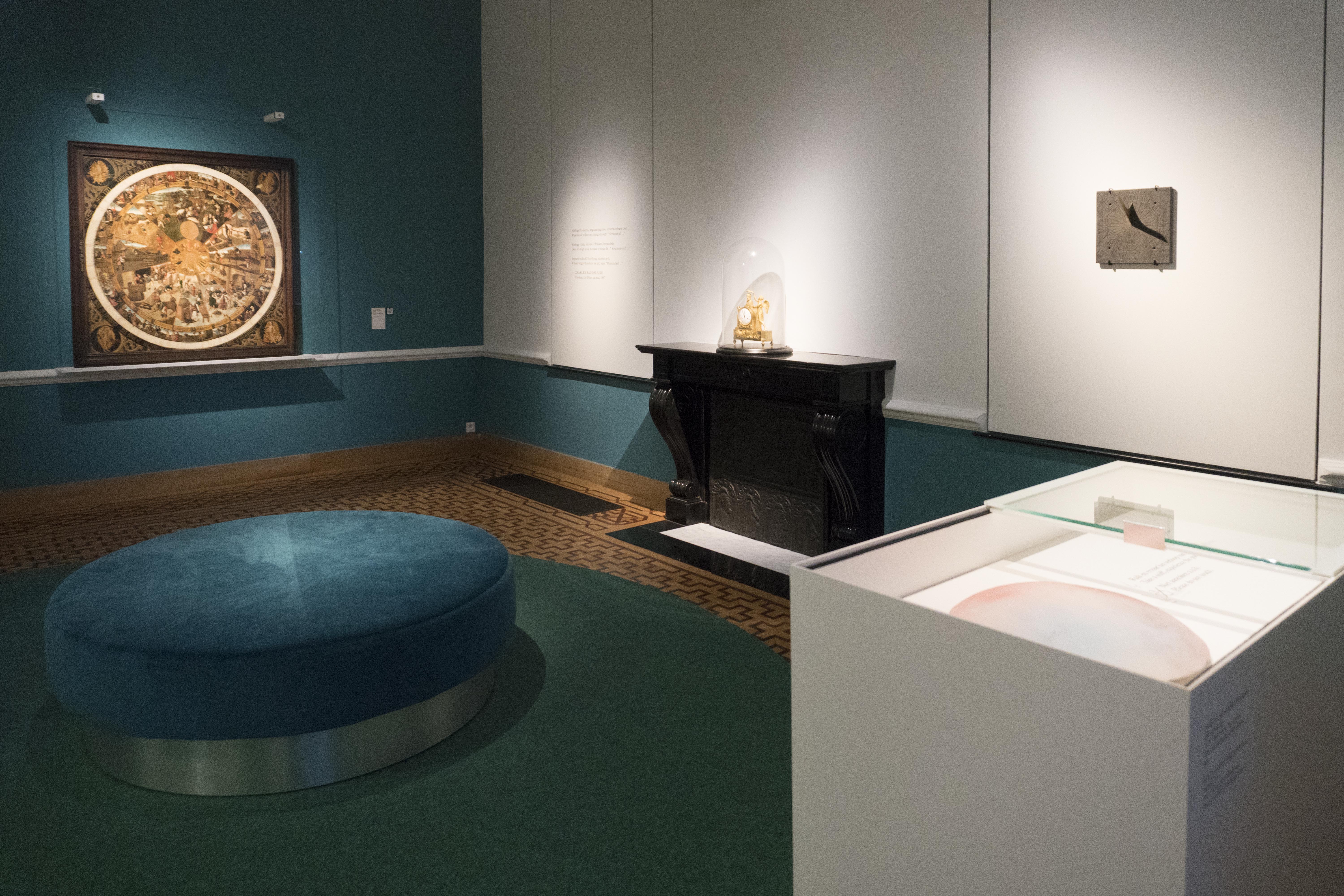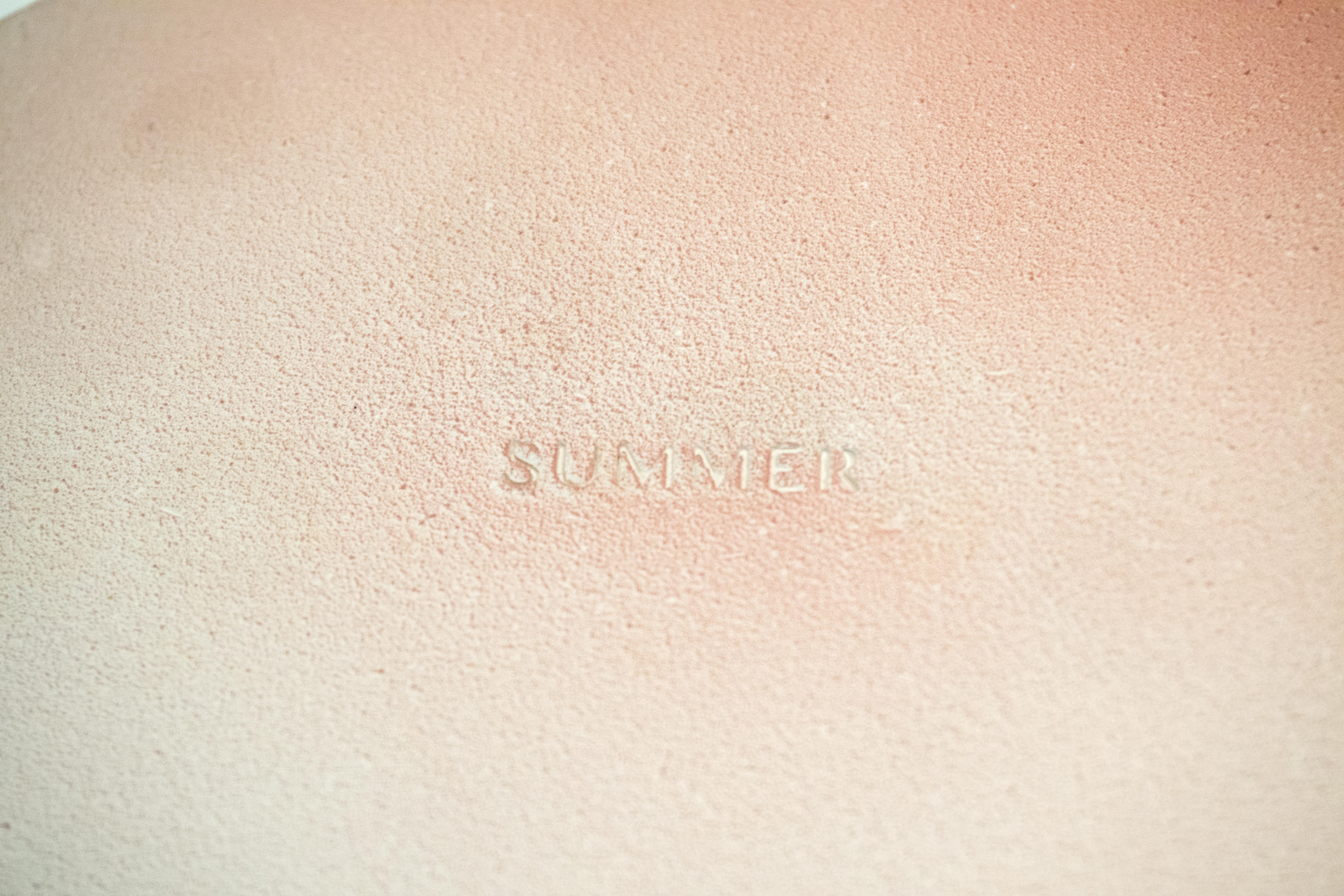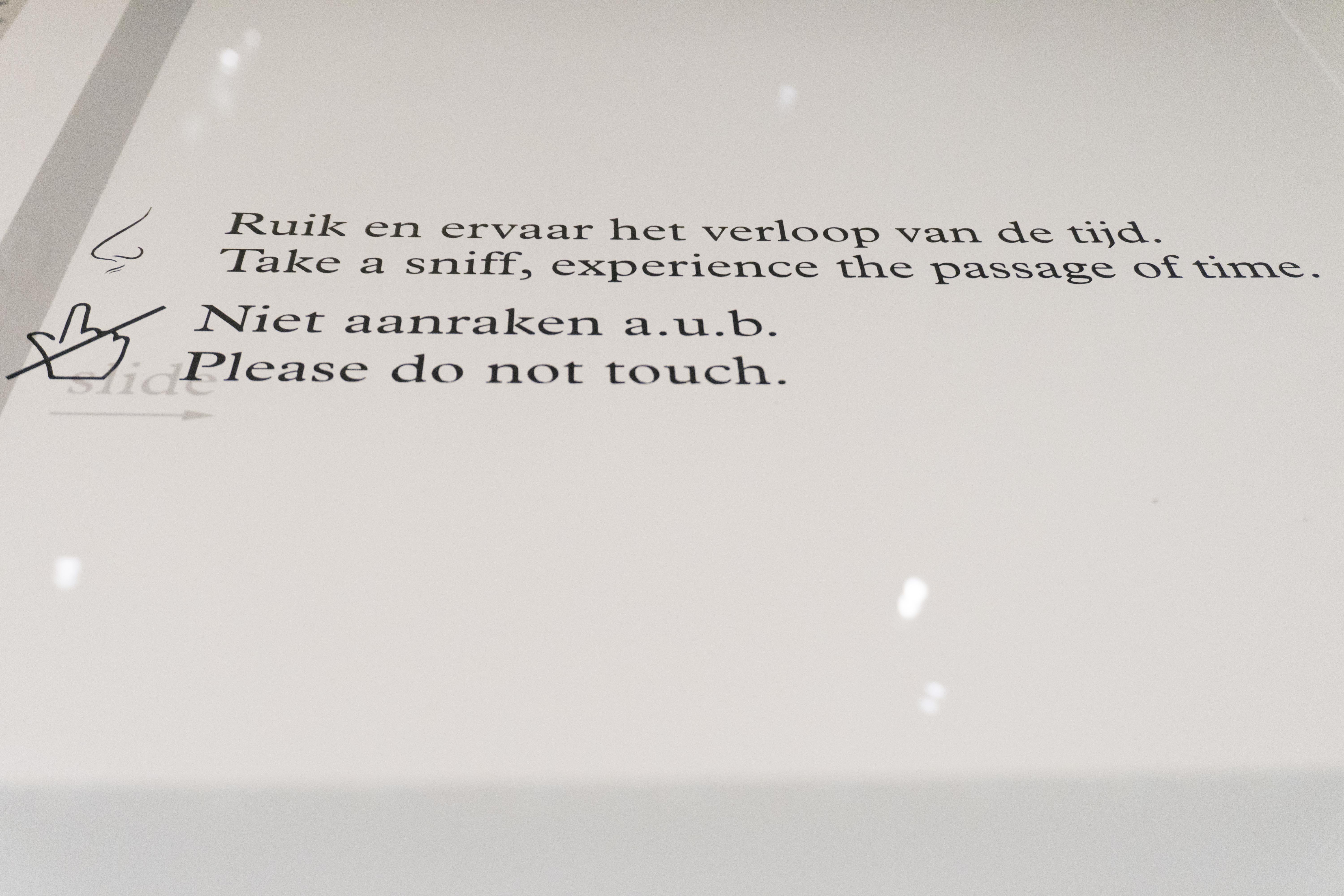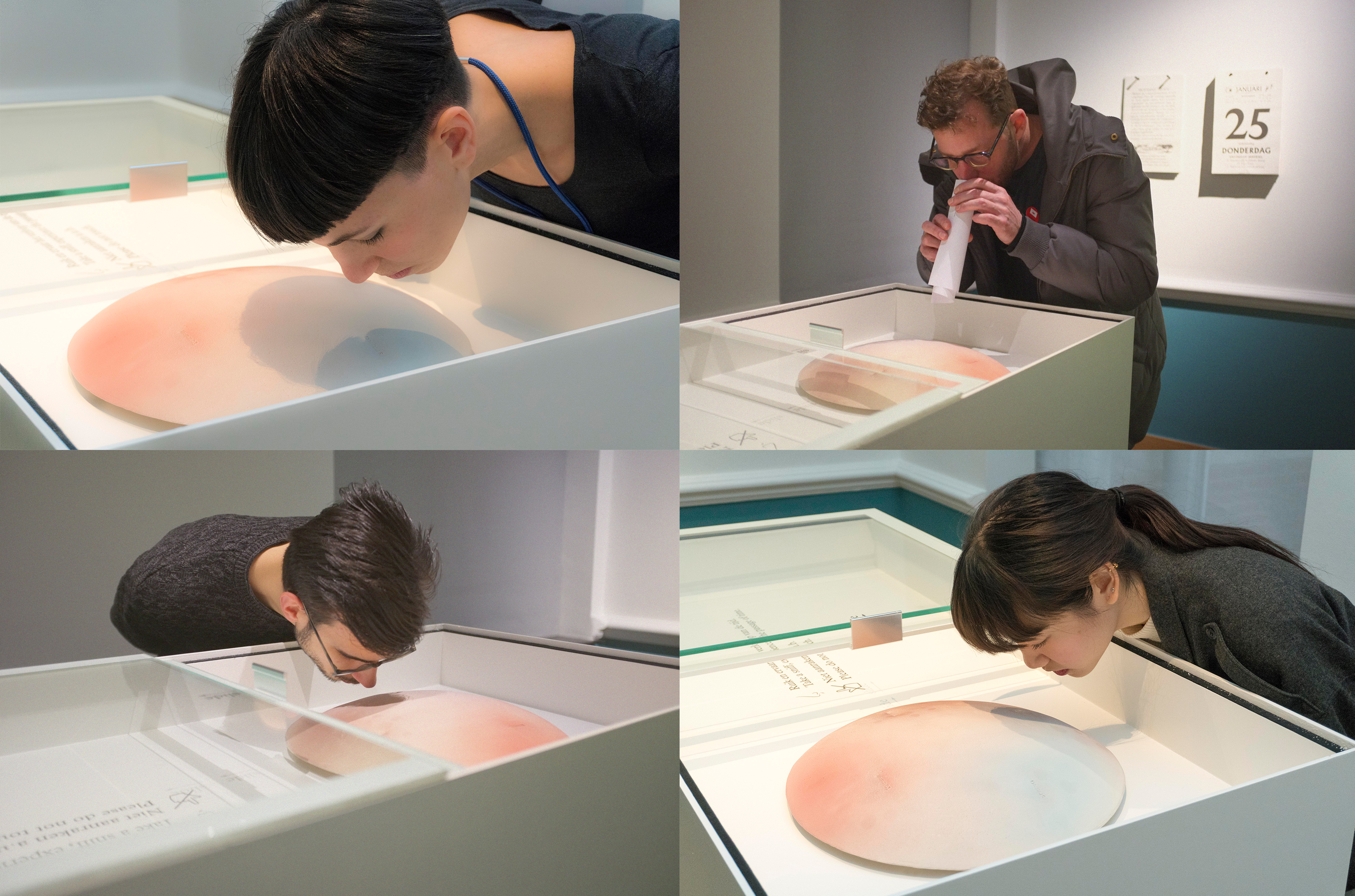“Olfactory Time”
Sensory Intervention for M Museum Leuven
This is a project in collaboration with PXL-MAD Hogeschool, M-Museum & Haystack with a support by Leuven Mindgate.
Leuven, Belgium 2018
A selection of fragrance/ olfactory medium on ceramic plate
“Olfactory Time” introduces an alternative way of perceiving time beyond the clock. This artistic intervention encourages us to re-experience the passage of time by exploring the sensorial phenomenon in which we are able to perceive and remember time indirectly through olfactory mediums. Martin Heidegger once stated, “One can, as it were, smell the being of such buildings, and often after decades one still has the scent in one’s nose.” This artwork urges us to vividly recollect the sequences of our personal memoirs using selective scents of the four seasons. The artwork itself encourages us to take a sniff from a circular ceramic plate, known as the ’Olfactory Calendar’. Each quarter of the plate represents one season, but unlike a conventional calendar which indicates the month or year, the ‘Olfactory Calendar’ cycles through the movements of the seasons using a specific selection of scents. These collected scents reflect various temporal associations from both a modern context as well as scents of medieval origin. Inspired by the ‘Calendar Dial’, a primitive masterpiece circa 1500’s, time was conceived as a cycle that constantly repeated itself and astrology had great influence on medieval people’s lives. As comparative analogy to olfactory time, the scents imprinted in one’s mind are to saved and re-encountered as time cycles on.
![]()
![]()
![]()
![]()
![]()
![]()
![]()
![]()
- PROCESS & DEVELOPMENT -
Specific fragrances aka olfactory medium will be distilled for the project, such as Pine-needles, Laurel. Lavendin.
Part of this project being developed from Distillery Workshop with Jan Kempeneers, A Distiller from Jevener Museum in Hasselt
Sensory Intervention for M Museum Leuven
This is a project in collaboration with PXL-MAD Hogeschool, M-Museum & Haystack with a support by Leuven Mindgate.
Leuven, Belgium 2018
A selection of fragrance/ olfactory medium on ceramic plate
“Olfactory Time” introduces an alternative way of perceiving time beyond the clock. This artistic intervention encourages us to re-experience the passage of time by exploring the sensorial phenomenon in which we are able to perceive and remember time indirectly through olfactory mediums. Martin Heidegger once stated, “One can, as it were, smell the being of such buildings, and often after decades one still has the scent in one’s nose.” This artwork urges us to vividly recollect the sequences of our personal memoirs using selective scents of the four seasons. The artwork itself encourages us to take a sniff from a circular ceramic plate, known as the ’Olfactory Calendar’. Each quarter of the plate represents one season, but unlike a conventional calendar which indicates the month or year, the ‘Olfactory Calendar’ cycles through the movements of the seasons using a specific selection of scents. These collected scents reflect various temporal associations from both a modern context as well as scents of medieval origin. Inspired by the ‘Calendar Dial’, a primitive masterpiece circa 1500’s, time was conceived as a cycle that constantly repeated itself and astrology had great influence on medieval people’s lives. As comparative analogy to olfactory time, the scents imprinted in one’s mind are to saved and re-encountered as time cycles on.








- PROCESS & DEVELOPMENT -
Specific fragrances aka olfactory medium will be distilled for the project, such as Pine-needles, Laurel. Lavendin.
Part of this project being developed from Distillery Workshop with Jan Kempeneers, A Distiller from Jevener Museum in Hasselt




- PROCESS & DEVELOPMENT -
Experimentation and Tests in typefaces on clay. Ceramic in the making with slip-casting method, finishing up with the coloring airbrush technique to acquire the soft gredient effects inspired from Arita, Japan.
